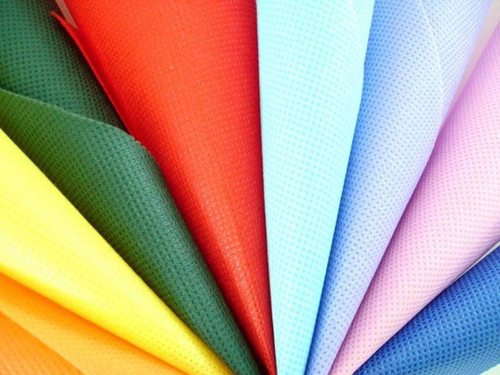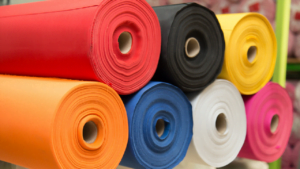Compared to other possibilities, nonwoven fabrics are incredibly popular, biodegradable, and non-toxic options for being environmentally friendly. In addition to being a type of plastic, Polypropylene is also one of those sorts having the least negative environmental impact. Due to its inert characteristics and eco-friendly qualities, Polypropylene is one type of polymer that is becoming increasingly popular across sectors. It is frequently called Spunbond. The PP Nonwoven Spunbond Fabric is created via the continuous process of spinning fibers, which are either guided using air streams or immediately scattered into a web-like structure.
A faster belt speed results from this operation. These are often created in sheet or web structures joined by entangled fibers or filaments using thermal or chemical treatments, depending on what the manufacturer or supplier of spunbond fabric specifies.
What are Polypropylene Spunbond Nonwoven fabrics?
Although thermoplastic polymers, such as PP Nonwoven Spunbond Fabric, are produced to resemble nonwoven materials. Its primary uses are nonwoven bags, interlining, coveralls for the medical industry, masks, filters, etc. It is becoming increasingly popular in the healthcare and fashion industries.
The following points are considered some of Polypropylene’s greatest qualities:
- Fabrics made of Polypropylene, often known as PP, are popular because they are incredibly strong and resistant to wear and abrasion.
- Among the manufacturing, commercial, and upholstery or textile industries.
- The PP fabric is staining resistant and can tolerate frequent and extended use.
- The lowest heat conductivity of any synthetic or natural fabric is found in PP, making it a superb insulator.
- Polypropylene fibers resist fading when colored and are resistant to sunshine.
- PP fabric has a high level of endurance with moths, mildew, and molds and is resistant to fabric bacteria and other germs.
- Polypropylene strands are challenging to ignite. They are flammable but not combustible. It becomes fire-retardant when certain additives are added.
- Polypropylene fibers can withstand moisture as well.
These significant advantages make it clear why Polypropylene is a widely used material with a wide range of uses in many worldwide sectors.
The outer surfaces of surgical and medical face masks frequently employ PP Nonwoven Spunbond Fabric, a spunbond polypropylene fabric. Due to its softness, environmental protection, and practicability, Favorite Hub is commonly used to make surgical masks, medical apparel, round caps, protective face masks, and household face masks. It is also utilized as a black cloth for nonwoven materials in the medical and health industries.
Nonwoven spunbond textiles have become more important over time for several reasons & the reasons are:
- They are more robust than any other material due to their great tear strength. They are regarded as suitable for carrying bags due to their robustness.
- Nonwoven spunbond textiles are often biodegradable, making them suitable for usage in environmentally beneficial ways. Products like nonwoven bags may be recycled and used again and again.
- Layering the cloth increases its durability.
- Additionally, Polypropylene nonwoven fabric has high tensile strength and flexibility and is very liquid-repellent.
- They are economical for consumers to eat for various uses because of the quick production process.
- Spunbond textiles are a good choice since they offer superior physical characteristics compared to other nonwoven materials.
- The microorganisms that can damage fabric or fiber are protected from the PP nonwovens.
Some important applications of spunbond non-woven fabric:
Whether a nonwoven cloth is biodegradable or not is frequently debated. Most of the time, it relies on the kinds of nonwovens created from different fibers. The main factor affecting a nonwoven fabric’s biodegradability is its kind of fiber. The PP Nonwoven Spunbond Fabric is often utilized in most everyday applications.
However, spunbond may be made from biodegradable fibers; this market is minimal since biodegradable fibers are twice as expensive as Polypropylene. Recyclable nonwoven bags are available. Spunbond polypropylene textiles are more environmentally friendly than plastic items and cause no harm to the environment.
Spunbond non-woven fabric manufacturing process:
The PP Nonwoven Spunbond Fabric products may be produced continuously. The procedure begins with spinning the fibers, which are then spread out over a sheet with the aid of deflectors. Spunbond produces low-cost products at faster belt speeds, making it a somewhat quicker method of making polymer nonwovens.
Conclusion:
The demand for such products in this current time has increased so significantly. Consequently, the melt-blown fabrics are mixed with the spunbond fabrics to produce much stronger. These fabrics, made with Polypropylene, are waterproof and can be used and thrown.




